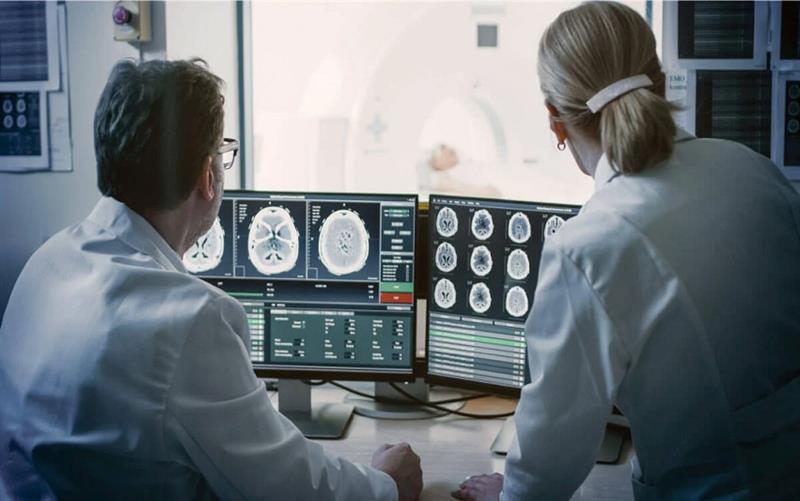
Healthcare software is a transformative tool, not merely a convenience. These digital tools are raising the bar for quality, accessibility, and sustainability in healthcare by improving patient outcomes and operational efficiency.
Leading the way in the direction of a healthy future will be the companies who adopt these innovations now.
Healthcare software is becoming a vital component of the future of medicine, not just a digital update. It bridges the gap between the current state of healthcare and a future characterized by improved health outcomes, more efficiency, and smarter systems by empowering patients, streamlining operations, and assisting doctors.
Businesses who take advantage of healthcare software's full potential now are positioning themselves and their patients for long-term success in the future.
There has never been a greater demand for creative, tech-driven solutions in the rapidly changing healthcare industry of today. Healthcare software, including electronic health records (EHRs), telemedicine platforms, and sophisticated data analytics, is revolutionizing internal processes as well as patient care. However, how precisely does it improve operational efficiency and patient outcomes? Let's take a closer look.
How Healthcare Software Improves Patient Outcomes
1. Personalized Care Plans
The "one-size-fits-all" approach is being abandoned in the healthcare industry.
These days, software platforms are able to compile a patient's genetic data, lifestyle choices, medical history, and current health information (from gadgets like activity trackers). Providers can use this information to develop highly customized care plans that are suited to each patient's unique requirements and hazards.
For example, a diabetic patient's diet, exercise, and medication can be tailored to their comorbidities, activity levels, and glucose levels.
This precision medicine strategy decreases trial-and-error prescribing while increasing therapeutic efficacy.
2. Enhanced Patient Engagement
The doctor-patient interaction is being revolutionized by patient engagement tools such as online portals, mobile health apps, and automated reminders.
Patients can now view their test results, medical data, and health education resources around-the-clock.
They are able to:
Online appointment scheduling and rescheduling
Get reminders for your medications.
securely communicate with their physicians
monitor their own development over time.
Research indicates that patients who are more actively involved in their care are more likely to attend follow-up appointments, follow treatment plans, and express greater satisfaction, all of which improve clinical results.
3. Improved Monitoring and Early Intervention
Heart rate sensors, glucose monitors, and smart blood pressure cuffs are just a few of the gadgets used in remote patient monitoring (RPM), which sends real-time data to care teams. This continuous flow of data enables healthcare professionals to spot unusual patterns early, frequently before a patient exhibits any symptoms.
For instance:
An unexpected increase in weight in a patient with heart failure may notify the care team, allowing for rapid action to prevent readmission to the hospital.
Patients with asthma or COPD can save ER visits by using RPM programs to identify declining lung function early.
In addition to saving lives, this preventative care approach lessens the overall financial strain on the healthcare system.
4. Seamless Care Coordination
The dispersion of patient data among many departments and providers is one of the largest problems facing the healthcare industry.
Interoperability is encouraged by contemporary healthcare software, which enables different systems to communicate with one another and exchange real-time data.
Care is safer and more effective when therapists, primary care doctors, pharmacists, and specialists have access to a single patient record.
This lowers:
Tests that are repeated
Errors in medication
Undiagnosed
The patient's annoyance at having to tell their experience again and over
In the end, it results in more comprehensive, team-based care, which has been demonstrated to significantly enhance patient outcomes.
How Healthcare Software Boosts Operational Efficiency
1. Streamlined Administrative Processes
Scheduling appointments, confirming insurance, billing, and processing claims are just a few of the time-consuming duties that can be a part of healthcare administration.
Many of these processes are automated by software:
Patients can self-book via scheduling platforms, which cuts down on phone calls.
Claims submissions are handled more accurately by automated billing systems.
By digitizing paperwork, document management technologies facilitate the storage, retrieval, and updating of information.
Administrative expenses decrease, employees have more time to provide patient care, and revenues rise as a result of quicker claims processing and fewer denials.
2. Data-Driven Decision Making
Analytics dashboards included with contemporary healthcare IT solutions convert unprocessed data into insights that can be put to use.
Clinical leaders and administrators can utilize these information to:
Determine the patient flow constraints.
Calculate workforce requirements depending on periods of high demand.
Keep an eye on key performance indicators (KPIs) such as patient satisfaction ratings, readmission rates, and average duration of stay.
Healthcare companies may enhance care quality, manage operations, and improve their financial health by using data to guide decision-making.
3. Regulatory Compliance and Risk Management
Strict regulations, including as GDPR in Europe and HIPAA in the United States, are in place for the healthcare sector worldwide.
Medical software:
Encrypts patient data
keeps track of who has accessed and modified records.
automatically notifies users of possible security breaches
aids businesses in monitoring and recording compliance-related activities
By reducing the possibility of data breaches, penalties, and harm to one's reputation, this makes the environment safer for both patients and healthcare professionals.
4. Workforce Productivity and Satisfaction
Healthcare professionals' daily work lives can be greatly enhanced by a well-integrated healthcare software environment.
Rather than battling with:
Antiquated filing systems
laborious manual data entry
Ineffective avenues of communication
Physicians, nurses, and administrative personnel can concentrate on high-value activities such as professional development, clinical decision-making, and patient interaction.
This results in:
Increased contentment at work
Reduced rates of burnout
Improved employee retention is essential in the current healthcare labor market.